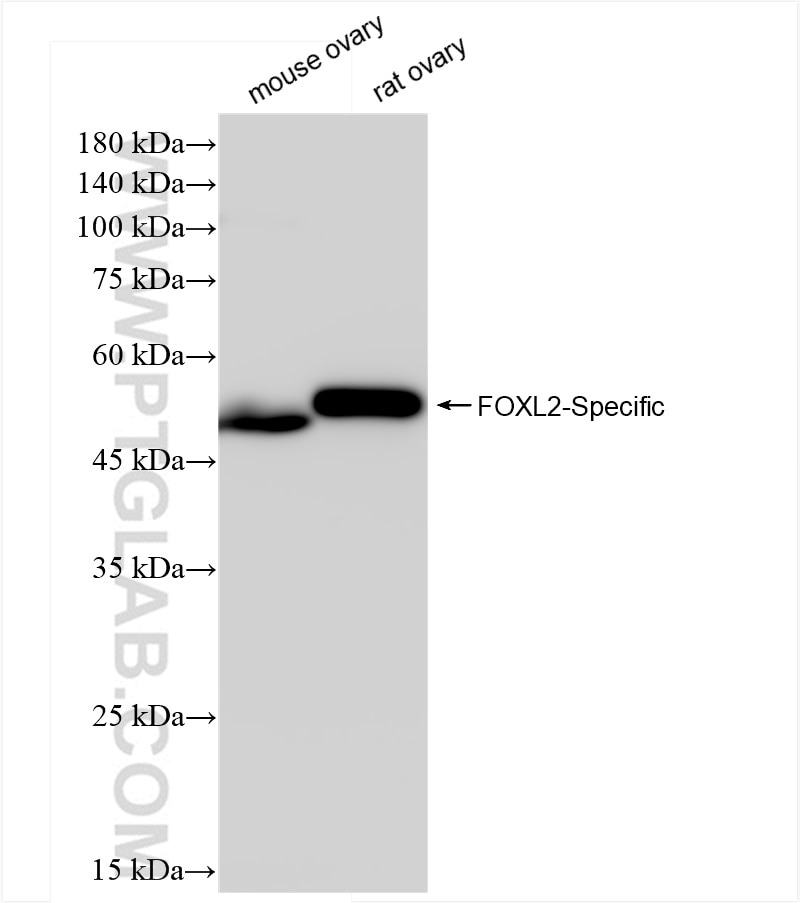Tested Applications
| Positive WB detected in | mouse ovary tissue, rat ovary tissue |
Recommended dilution
| Application | Dilution |
|---|---|
| Western Blot (WB) | WB : 1:5000-1:50000 |
| It is recommended that this reagent should be titrated in each testing system to obtain optimal results. | |
| Sample-dependent, Check data in validation data gallery. | |
Product Information
84144-1-RR targets FOXL2-Specific in WB, ELISA applications and shows reactivity with human, mouse, rat samples.
| Tested Reactivity | human, mouse, rat |
| Host / Isotype | Rabbit / IgG |
| Class | Recombinant |
| Type | Antibody |
| Immunogen | Peptide Predict reactive species |
| Full Name | forkhead box L2 |
| Calculated Molecular Weight | 39 kDa |
| Observed Molecular Weight | 45-50 kDa |
| GenBank Accession Number | NM_023067 |
| Gene Symbol | FOXL2 |
| Gene ID (NCBI) | 668 |
| RRID | AB_3671706 |
| Conjugate | Unconjugated |
| Form | Liquid |
| Purification Method | Protein A purfication |
| UNIPROT ID | P58012 |
| Storage Buffer | PBS with 0.02% sodium azide and 50% glycerol , pH 7.3 |
| Storage Conditions | Store at -20°C. Stable for one year after shipment. Aliquoting is unnecessary for -20oC storage. 20ul sizes contain 0.1% BSA. |
Background Information
FOXL2 is a critical factor essential for ovary differentiation and maintenance, and repression of the genetic program for somatic testis determination. It prevents trans-differentiation of ovary to testis through transcriptional repression of the sertoli cell-promoting gene SOX9. FOXL2 is mainly expressed in ovary, parathyroid gland and sex cord-stromal tumors.
Protocols
| Product Specific Protocols | |
|---|---|
| WB protocol for FOXL2-Specific antibody 84144-1-RR | Download protocol |
| Standard Protocols | |
|---|---|
| Click here to view our Standard Protocols |



